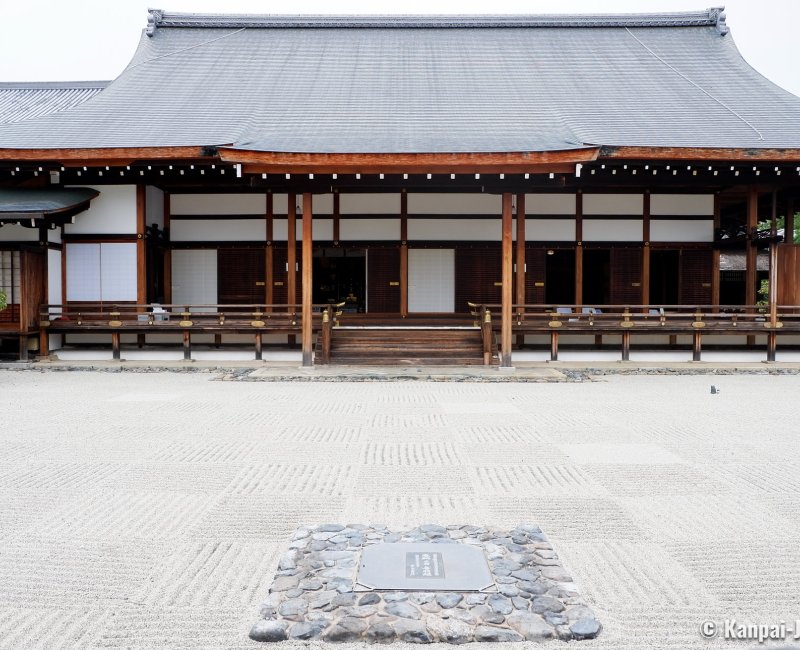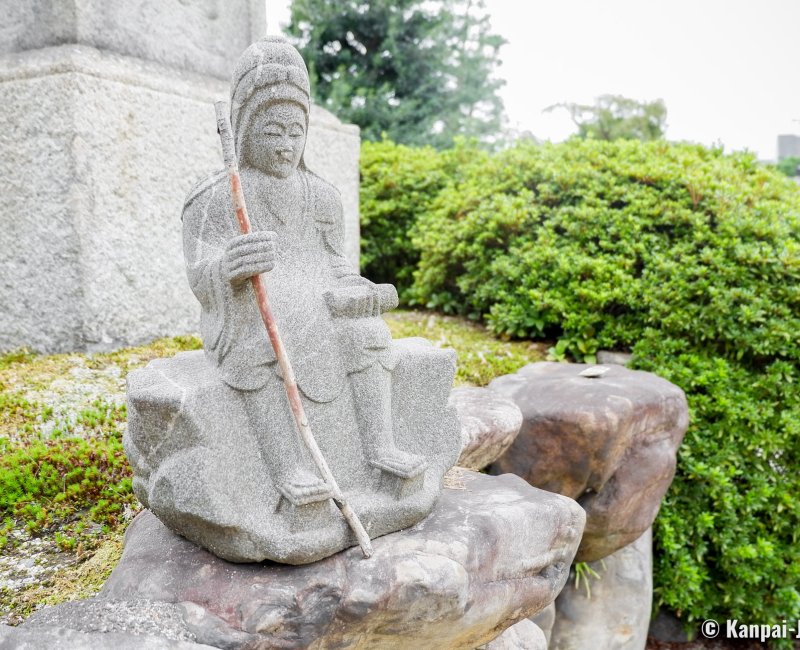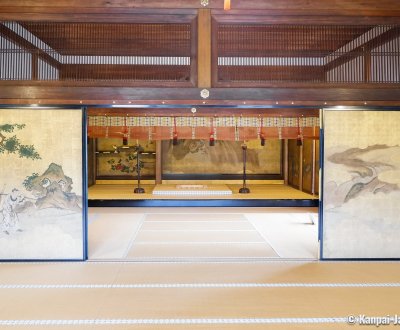Shogo-in
The Imperial Temple Displaying Ornamental Paintings
Shogo-in is a Buddhist temple and the official headquarter of the Shugendo Honzan branch, located in the east of Kyoto. As it was used as a residence by emperors Kokaku and Komei, it also as the Monzeki temple status. Its visit is particularly interesting in autumn to admire the hundred of fusuma sliding doors ornamented with authentic paintings by the Kano School.
Founded in the 9th century by monk Enchin (814 - 891), the temple was initially affiliated to the Tendai School and under the leadership of the Mii-dera, located on the other side of Mount Higashiyama in Otsu. Then, a philosophy specific to Shogo-in and pertaining to the Shugendo ascetic practice was developed, to finally create a specific branch called Honzan-han, with Shogo-in logically becoming its main temple.
Shugendo is a physical and mental training in mountains that are deemed sacred and are also pilgrimage sites. The people taking part in this practice are called yamabushi and they don a traditional clothing called suzukake. In addition to prayers and meditation, they learn how to survive alone in nature and to heal with medicinal herbs. Nowadays, very few people engage in this practice, that is considered difficult, and requires endurance.

Shinden, former temporary imperial palace
As a Monzeki temple, Shogo-in has strong ties with the Japanese imperial family. The temple was indeed used twice as a back-up residence for the emperor of Japan:
- First in 1788, Emperor Kokaku (1771 - 1840) sought refuge here after the fire 🔥 of his palace Kyoto Gosho;
- Then in 1854, Emperor Komei (1831 - 1867) lived here for a while.
Of these specific periods remains the Shinden Pavilion, a large traditional building of about fifteen tatami rooms; spaces where the monarchs temporarily lived. The indoor visit is only open a few weeks in the year, in autumn 🍁, in order to preserve its historical and artistic heritage. Fall is the perfect occasion to admire the ornamental paintings on fusuma sliding doors. The 300-years-old artworks picture peacocks, cranes, voluminous pine trees and historical scenes and were made by artists of the renowned Kano School.
Then, a passageway leads to another remarkable pavilion called Shoin, that is to say "study room". The building was designated Important Cultural Property of Japan and was once a part of Kyoto’s imperial palace before being relocated in Shogo-in’s grounds in the early Edo period (1603 – 1868). The fusuma screens are made of finely carved wood. Some ornaments symbolize love letters.

Hondo, the main hall dedicated to Shugendo
The visit ends at hondo, the main hall of the temple, were are sheltered statues and other objects dedicated to the Shugendo practice, and especially an image of monk En no Gyoja (or En no Ozunu), the founder of this spiritual current.
Several statues of Fudo Myoo, some of them being very rare, are displayed behind the altar. The wrathful god holds in its right hand a sword to cut worshipers’ misfortune and overwhelming desires. The rope in its left hand symbolizes the fact of getting back in the right path and not to be devoured by one’s passions.
Despite being not well-known by Western tourists, the discreet Shogo-in temple is worth the visit for its authentic and traditional elegance, as well as its ties to the imperial family. To make the most of the visit, consider going between September and December, and check the date beforehand to view the beautiful paintings of the fusuma doors.

